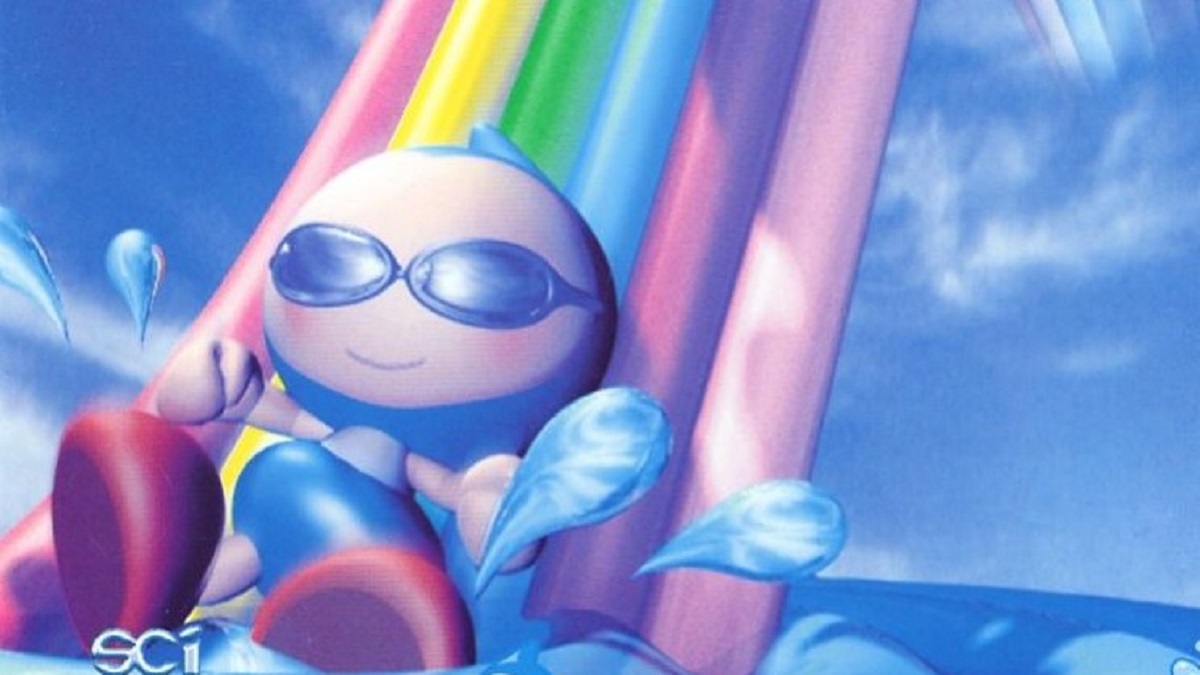Oh no, you can’t skip the tutorial
Wetrix was an easily overlooked little puzzler. Released in 1998 for the N64 before getting ported to PC and Dreamcast, it was unconventional, to say the least. While the name is probably supposed to remind you of Tetris, there’s a lot more to it than trying to wipe out a wall of tetrominoes. The goal is to wall up areas to hold water, and doing a good job rewards you with ducks. I think we can all agree that ducks are a pretty great reward. They’re like chill geese that won’t drag your child away.
If Wetrix was easily overlooked, its 2000 sequel blended in with the carpeting. Despite enjoying the original and knowing the existence of a follow-up, I only recently got around to trying it. That’s because it’s not named Wetrix 2 in North America. It’s Aqua Aqua.
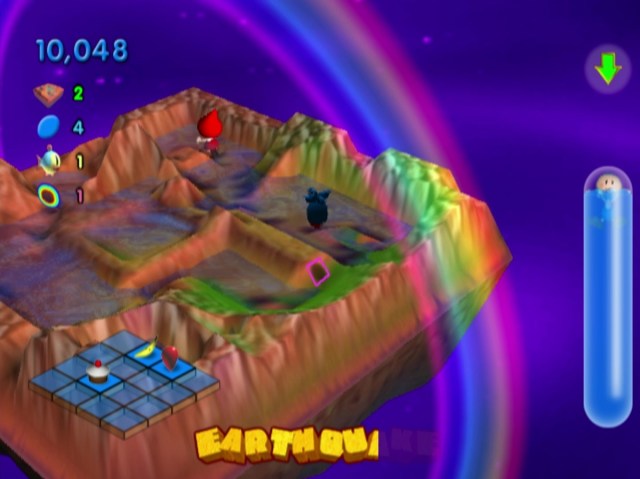
Uppers, downers, lefters, righters
To be clear, it’s only Aqua Aqua in North America. In Europe, it was Aqua Aqua: Wetrix 2.0, which gets the point a lot clearer. On the other hand, Japan had the stylized Aquaqua, which is slightly more fun to say. “A-kwa-kwa.”
The box art was also awful in North America. If the name wasn’t unrecognizable enough, the cover looks like it belongs at the bottom of a bargain bin. The game, on the other hand, doesn’t belong there. I mean, as long as you like Wetrix, it doesn’t. And you should.
I outlined the basics above, and that largely remains accurate. In fact, I’m scouring my brain for any major differences between Wetrix and Aqua Aqua, and I’m coming up with bupkiss. You make ponds. Except for this time, your reward varies depending on the board you’re playing on. Sometimes it’s dinosaurs, and dinosaurs are nearly as awesome as ducks.
You’re given a square of land to build on, and you create your pools by setting various block shapes on it that fall from the sky. These “uppers” aren’t the only things that drop on you, however. There are also “downers,” bombs, fire, water, and ice. You have to manage all these various terrain movers to create the biggest, deepest pools for your dinosaurs.
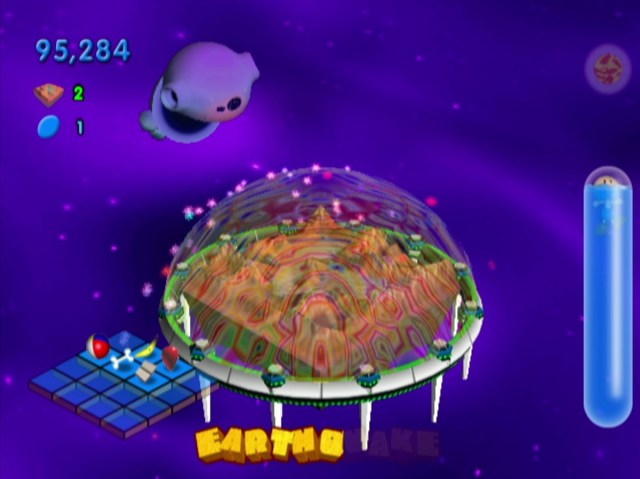
Rainbow!
Actually, saying “biggest, deepest,” pools might be a bit inaccurate. Scoring is a bit of a mystery in Aqua Aqua, even after playing the tutorial. Essentially, points are scored for most actions you take, whether it’s fixing a hole in the landscape or dropping enough uppers. To get higher scores, you need to build your multiplier, and there’s a slew of ways to do this.
One of the most obvious is simply by having more lakes. While having one big body of water has its advantages, more lakes will increase your multiplier. Having a certain amount of depth in one of these lakes will also attract the aforementioned “lake mates” like dinosaurs. They’re multipliers too. If you have enough water on your board, a rainbow will stretch across; that’s another multiplier. Finally, clearing water by dropping fire on it might land you with an item for your bingo board. Completing lines will do various things like… increase you multiplier.
Aqua Aqua is more of an art than a science. It’s hard to be exact with it, but the main factor in deciding your success is not spilling a lot of water. As you spill water, a gauge fills, and when it’s at maximum, the round is over. The gauge also depletes, so losing a bit of liquid isn’t the end of the world.
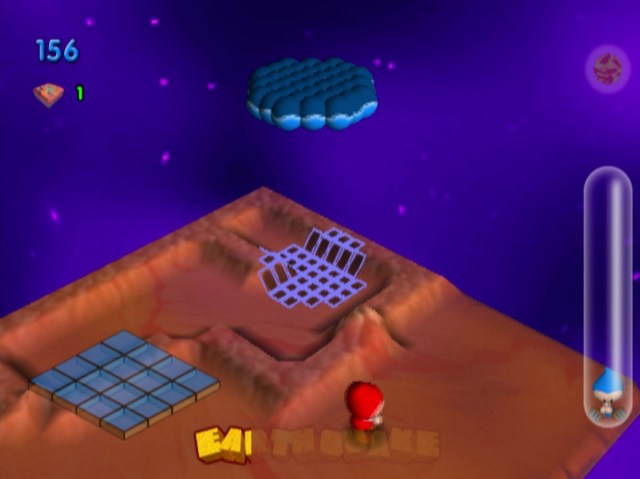
Ducks and Dinosaurs
One of the main new additions to Aqua Aqua is a story mode. Well, “Story” is a little generous, but it gives you a series of levels to play through. Four to be exact, which isn’t a lot and won’t take you very long provided you know the basics of how to play. The basics are something you have to know going into the story mode because it’s not unlocked until you play through an excruciating tutorial. However, there is motivation to pursue higher scores on each of the stages.
The main wrinkle here is twofold. First, the matches aren’t endless. Survive for enough time, and it ends. Second, there are monsters who will occasionally bombard your landscape. By getting enough points in the time before they show up, you can block their attacks, but even if they do hit you, it isn’t the end of the match. Usually, it will just jazz up your landscape a bit.
Be careful, however, if your aquascaping gets a bit too undulating, you’ll trigger an earthquake. While these are survivable, they’re pretty devastating. You’ll need to pop some downers to prevent your board from becoming too bumpy. It’s a pretty nice mechanic that rounds out the skill you’ll need to keep water held in.
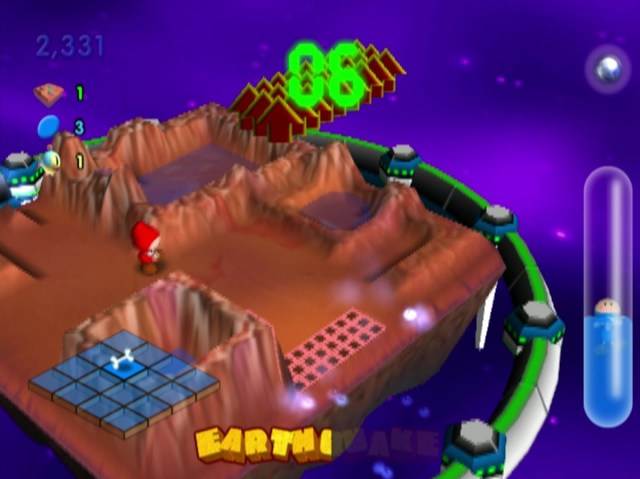
Another Wetrix
Aqua Aqua, and by extension, Wetrix, isn’t my favorite puzzle game, but it’s a nice deviation from block stacking and bit matching. There’s a lack of precision in a lot of its mechanics, but it’s easy-going enough to make up for these. Building ponds isn’t exactly as relaxing as it sounds, but it’s fun, especially if you have a second player to join in.
On the other hand, Aqua Aqua doesn’t really make much of a case for being a sequel. There were some new features planned, like the ability to expand the size of your board, but it was scrapped, and nothing was really dropped in place of it. There are these disgusting goblin things that roam around the screen, but they’re better off ignored. Instead, it’s mostly just Wetrix again, which is fine because it’s a pretty decent game. I wish there were nicer, more feature-packed modern ports, but Aqua Aqua was the last we’d see of the series.
For other retro titles you may have missed, click right here!


